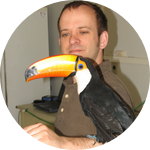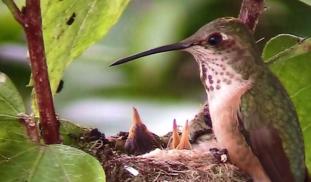Please wait...
About This Project
Hummingbirds use energy at extremely high rates due to their small size and high metabolism. They must conserve energy by going into nightly torpor, drastically dropping their metabolic rate and body temperature. We aim to quantify the energetics associated with nesting female hummingbirds using thermal imaging. We predict that in order to incubate their eggs well, they will rarely use torpor. This has important implications for understanding how animals cope with extreme energetic requirements.

Browse Other Projects on Experiment
Related Projects
Using eDNA to examine protected California species in streams at Hastings Reserve
Hastings Reserve is home to three streams that provide critical habitat for sensitive native species. Through...
City smart: Are cities making birds smarter?
One cannot go to Florida and miss the White Ibises roaming golf, park and private lawns. But how does a...
How do polar bears stay healthy on the world's worst diet?
Polar bears survive almost entirely on seal fat. Yet unlike humans who eat high-fat diets, polar bears never...





